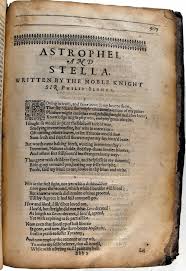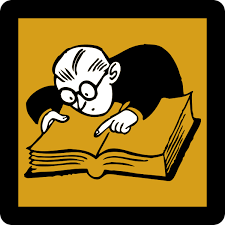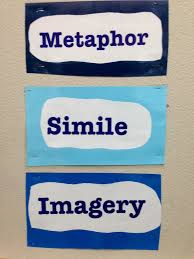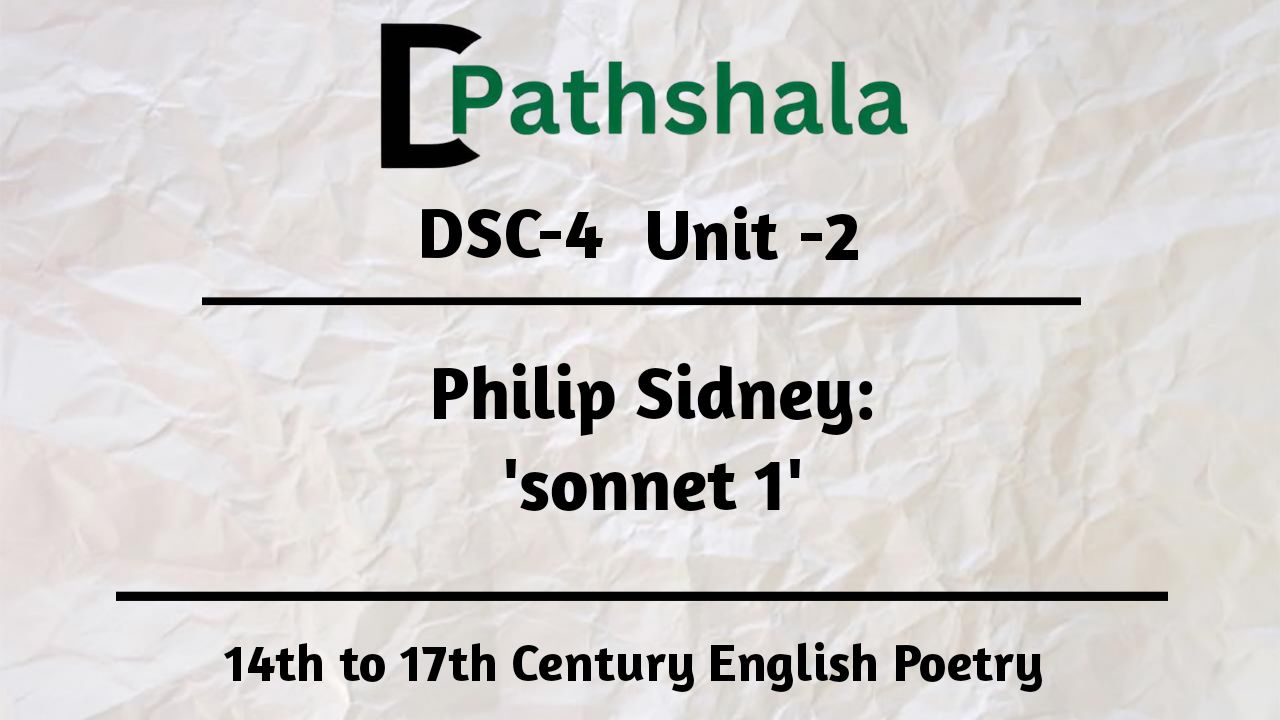In this post, notes of Unit 2 ( Philip Sidney: ‘Sonnet I’ ) from DSC – 4 (14th to 17th Century English Poetry) are given which is helpful for the students doing graduation this year.
About Philip Sidney

Philip Sidney (1554–1586) was an English poet, court member, and soldier. He is considered a key figure in Elizabethan literature.
His work greatly impacted English poetry and prose, influencing many writers who came after him.
philip sidney life and works
Biography of Philip Sidney
- Philip Sidney was born on November 30, 1554, in Kent, England. He was the oldest son of Sir Henry Sidney, a government worker, and Lady Mary Dudley, who came from a noble family.
- He received a top-notch education, first at Shrewsbury School and then at Oxford. Sidney was skilled in many areas—writing poetry, diplomacy, court life, and fighting—and he mingled with the elite in Elizabethan England, gaining the favor of the royal court.
- His education and upbringing reflected the values of the Renaissance, which emphasized learning, refinement, and good morals.
- Sidney’s life ended too soon in 1586 when he was fatally injured during the Battle of Zutphen in the Eighty Years’ War. Even though his life was short, he made a lasting impact on literature.
Historical Background of Philip Sidney
Sidney lived during the Elizabethan era, a time of major changes in politics, religion, and culture in England.
The Protestant Reformation was reshaping politics in Europe, and England was becoming a powerful nation under Queen Elizabeth I.
The Renaissance brought a surge in literature, science, and the arts to England. Sidney’s works reflect the ideas of his time, including humanism and influences from ancient cultures
philip sidney contribution to english literature
Major Works by Philip Sidney
Philip Sidney’s contributions to English literature include poetry, prose, and essays. His most important works are:

– “Astrophel and Stella“: This is the first major sonnet sequence in English literature, with 108 sonnets and 11 songs about unreturned love and emotional struggles.
The work shows Sidney’s skill in writing sonnets and his ability to express deep feelings.
– “The Defence of Poesy” (also called “An Apology for Poetry“): This essay is one of the first pieces of literary criticism in English.
Sidney defends poetry against its critics, arguing that poetry has a moral and educational purpose, inspiring goodness and action.
– “Arcadia“: Sidney’s prose romance, Arcadia, combines romance, political themes, and adventure. It became very popular in the Elizabethan age and inspired many later writers.
Philip Sidney’s Influence on English Literature

Philip Sidney’s work was a turning point in English literature, helping to elevate English to a literary language like Latin and Italian.
His sonnets in Astrophel and Stella made the Petrarchan sonnet form popular in England, influencing poets like Edmund Spenser and William Shakespeare.
The Defence of Poesy laid the groundwork for English literary criticism, and its ideas about the power of literature continued to resonate during the Renaissance and later.
Sidney’s unique style and thoughtful writing left a lasting impact on English poetry, prose, and literary theory, securing his place as a leading figure in Elizabethan literature.
Astrophel and Stella by philip sidney

Philip Sidney’s Astrophil and Stella 1 is one of the first and most important collections of sonnets in English literature.
Written in the 1580s, it has 108 sonnets and 11 songs, focusing on the feelings and thoughts of unreturned love.
The work reflects the Renaissance’s deep connection with both ancient and modern literary styles.
Structure and Themes
Sonnet Sequence
Astrophil and Stella 1 uses the style of a Petrarchan sonnet sequence, a common type of love poetry in Renaissance Europe.
The main character, Astrophil, whose name means “star-lover,” is in love with Stella, which means “star,” but she is not available.
The sequence shows Astrophil’s changing feelings, from admiration and desire to frustration and sadness. Sidney skillfully uses the sonnet form’s rules for rhyme and rhythm but also plays with the format for different effects.
The structure allows Sidney to dive into the lover’s feelings. He typically shows a problem in the first eight lines (octave) and how it is resolved or complicated in the last six lines (sestet), which is a common feature of the Petrarchan style.
Astrophil and Stella 1 Theme
Astrophil and Stella 1 covers several main themes:
– theme of Unrequited Love: The main theme is Astrophil’s unfulfilled love for Stella, who is married. Sidney shows the strong but frustrating nature of love, leading to self-reflection and doubt.

– Idealization of the Beloved: Stella is often seen as the perfect example of beauty and goodness. Sidney’s portrayal follows the Renaissance tradition of idealizing women but adds complexity by showing the struggle between Astrophil’s admiration for her goodness and his physical attraction to her.
– Conflict Between Reason and Passion: Astrophil struggles with the clash between logical thought and intense emotion.
He knows his love for Stella is impossible and morally wrong, yet he cannot help his feelings. This struggle reflects broader Renaissance ideas about reason, morality, and personal desires.
– Art and Poetry: Sidney often thinks about the nature of poetry in the sonnets, examining how writing helps Astrophil express his feelings.
The poems are as much about creating art as they are about love. Sidney combines his thoughts on writing with traditional themes of love and admiration.
Historical Background of Astrophil and Stella 1
Renaissance Poetry
Sidney’s Astrophil and Stella 1 was created during the English Renaissance, a time of literary growth and exploration. Poetry was a way to share personal feelings and moral ideas.
Sidney’s work shows the Renaissance focus on individual experiences, deep emotions, and the idealization of classical beauty and goodness.
Astrophil and Stella 1 also helped make the sonnet sequence a well-known genre in English literature, influencing later poets like Edmund Spenser and William Shakespeare.
Petrarchan Influence
The form and themes of Astrophil and Stella 1 are greatly influenced by the Petrarchan sonnet tradition, named after the Italian poet Francesco Petrarch.
His Canzoniere, a collection of sonnets written to his love Laura, served as a model for much Renaissance love poetry.
Like Petrarch, Sidney uses the idea of the unattainable beloved and the suffering lover, building his work around Astrophil’s frustrated love for Stella.
However, Sidney adds his own English twist to the Petrarchan style. While he follows Petrarch’s example of idealizing the beloved and exploring the tension between love and morality, Sidney also includes his own humor, irony, and psychological depth.
Astrophil is more self-aware and conflicted than Petrarch’s speaker, offering a fresh take on the tradition.
In addition to Petrarch, Sidney’s work also shows the influence of classical poets like Ovid and Horace, and he helped establish the sonnet’s role in English literature, inspiring many poets who came after him.
Astrophil and Stella 1 is a significant work of Elizabethan poetry, combining personal feelings with literary skill and connecting deeply with Renaissance humanism and Petrarchan love poetry.
Detailed Analysis of Sonnet I
Text of Sonnet I
Original Text
- Astrophil expresses his true love and wants to show it through poetry, hoping that his beloved, Stella, will find joy in his pain.
- He believes that if she enjoys reading his poems, she will understand his feelings, which could lead her to feel pity for him and perhaps return his love.
- He struggles to find the right words to describe his sadness and works hard to come up with clever ideas to entertain her.
- He often reads other poets’ works to find inspiration for his own writing.
- However, his words come out awkwardly because he lacks true creativity. He feels that creativity, which should come naturally, is lost when he tries too hard to write well.
- The styles of other poets feel strange to him. He feels like he has many ideas but can’t express them, which frustrates him. In the end, his Muse tells him to stop trying so hard and just write from his heart.
Astrophil and Stella 1 by Philip Sidney Summary
Line-by-Line Summary
- Astrophil starts by saying he truly loves and wants to show it through poetry.
- He hopes Stella will find joy in his suffering.
- He thinks that if she enjoys his poems, she will understand his feelings.
- Understanding his pain might make her feel sorry for him and possibly love him back.
- He struggles to find the right words to express his deep sadness.
- He works hard to come up with clever ideas to entertain her.
- He often reads other poets to find new inspiration.
- He seeks fresh ideas to help his tired mind.
- But his words come out poorly and lack creativity.
- Creativity disappears when he tries too hard to study and write.
- The styles of other poets feel unfamiliar to him.
- He feels full of ideas but can’t express them, causing him pain.
- Frustrated, he chews on his pen and blames himself.
- His Muse scolds him, telling him to look inside himself for inspiration.
Paraphrase of Key Lines
– Astrophil wants to express his true love through poetry.
– He believes that if Stella enjoys his poetry, she will understand his love.
– Creativity goes away when he forces himself to study too hard.
– His Muse tells him to stop overthinking and just write from his feelings.
Astrophil and Stella 1 Analysis

Sidney’s Sonnet I shows the struggle between wanting to impress a loved one with beautiful poetry and the challenges of writing authentically.
The poem reflects Astrophil’s frustration as he tries to write poems that will win Stella’s love.
In the end, his Muse advises him to be true to himself and draw inspiration from his own heart, suggesting that real poetry comes from genuine feelings rather than forced effort.
This sonnet also highlights the theme of unrequited love, where the lover suffers from wanting someone who is unattainable.
Sidney connects the search for true love with the search for honest poetry, showing that both are difficult and deeply connected.
Astrophil and Stella 1 theme
Philip Sidney’s Sonnet I presents important themes and ideas that appear throughout Astrophil and Stella 1.
These include the conflict between love and desire, what art and poetry mean, and the speaker’s inner struggles.
theme of Love and Desire

Theme:
The main theme of Sonnet I is the speaker’s deep, unreturned love for Stella. Astrophil’s love is real (“Loving in truth”) but also filled with desire.
He hopes that by sharing his feelings through poetry, Stella will enjoy reading it, which might lead her to feel pity and love him back.
Motif:
The idea of unreturned love is common in Renaissance poetry and follows a traditional pattern. Astrophil not only wants to express his love but also hopes to get a reaction from Stella.
The sequence shows the struggle between ideal love (which admires the beloved’s qualities and distance) and the physical wish for closeness.
– “Pleasure might cause her read, reading might make her know, Knowledge might pity win, and pity grace obtain.”
This line shows Astrophil’s hope: he believes that if he shares his pain well, Stella will understand him, and through understanding, she might even love him.
theme of Art and Poetry
Theme:
Another major theme in Sonnet I is what art and poetry are about. Astrophil is driven by his wish to create poetry that will show his love and catch Stella’s attention.
The sonnet looks at the struggle to find the right words to express his feelings. His search for the perfect way to express himself reflects his desire for Stella’s love, which is also hard to achieve.
Motif:
The idea of poetry as creation appears in Astrophil’s attempts to write a poem that will impress Stella.
However, instead of trusting his true feelings, he relies on “Study” (careful effort) and other poets, which leads to failure.
His Muse tells him to be true to himself: to “look in thy heart and write.” This highlights the belief during the Renaissance that true poetry comes from one’s heart and personal feelings, not from copying others.
– “Biting my truant pen, beating myself for spite— / ‘Fool,’ said my Muse to me, ‘look in thy heart and write.'”
Here, the speaker’s frustration with writing leads to self-awareness. The Muse, representing natural inspiration, tells him to stop depending too much on study and other writers, and to instead draw from his own true feelings.
theme of Conflict and Resolution
Theme:
Conflict in Sonnet I comes from Astrophil’s desire to write impressive verses for Stella while realizing that his forced efforts are not enough.
The poem contrasts true inspiration (linked to real feelings) with the artificiality of studying others and using learned techniques.
This inner conflict reflects Astrophil’s love for Stella, where his strong feelings clash with the fact that she is out of reach.
Motif:
The idea of conflict and resolution in Sonnet I is both emotional and creative. Astrophil’s deep sorrow matches his struggle to write, where his words “come halting forth” and don’t express his feelings well.
The resolution comes in the last line when the Muse gives him the answer: true art (like true love) should come from within.
The sonnet ends with Astrophil realizing that being genuine is the key to both writing well and expressing feelings.
– “Invention, Nature’s child, fled step-dame Study’s blows;”
This line shows the struggle between natural creativity (invention) and forced effort (study).
The idea that invention “flees” from study suggests that real creativity cannot be forced through strict rules or copying others.
– “‘Fool,’ said my Muse to me, ‘look in thy heart and write.'”
The resolution of this creative and emotional struggle comes from the Muse’s advice: real poetry, like real feelings, must come from personal experience and truth, not from outside influences.
Conclusion
In Sonnet I, Sidney presents key themes that will be explored in Astrophil and Stella 1. The conflict between love and desire, the nature of art and poetry, and the conflict and resolution within the speaker all highlight Astrophil’s struggle to express himself and his longing for Stella.
Sidney’s use of these ideas allows the sonnet to reflect on love and the creative process. In the end, the poem suggests that both love and poetry are most powerful when they come from genuine feelings.
Astrophil and Stella 1 literary devices

Philip Sidney uses different writing tools in Sonnet I to make the poem feel deep and well-structured. These tools help show themes like love, frustration, and creativity.
Imagery

Imagery is important in Sonnet I because Sidney uses clear descriptions to show Astrophil’s feelings and struggles.
– “Paint the blackest face of woe“
This line uses strong images to describe Astrophil’s sadness as dark and heavy. The phrase “blackest face of woe” makes sorrow feel real and heavy.
– “Sunburn’d brain“
This image shows Astrophil’s tired mind from trying too hard to be creative. The idea of a “sunburned” brain suggests he feels drained, like dry land under the sun, showing his lack of inspiration.
The imagery in Sonnet I highlights feelings of frustration and the difficulty of forced creativity.
Metaphor and Simile
Sidney uses metaphors and similes to express Astrophil’s struggles, especially in creating poetry.
– “Studying inventions fine, her wits to entertain“
Here, “inventions” means clever ideas. Astrophil’s effort to create original ideas feels forced, showing his struggle to write poetry for Stella.
– “Some fresh and fruitful showers upon my sunburn’d brain“
In this line, rain stands for creative ideas. Astrophil wishes for “fruitful showers” to refresh his tired mind, which has been worn out by trying to copy other poets.
– “Great with child to speak, and helpless in my throes“
This metaphor compares Astrophil’s wish to express his thoughts to being pregnant. He has many ideas but can’t share them, showing his frustration.
Personification
Sidney also uses personification to give life to ideas like creativity and inspiration.
– “Invention, Nature’s child, fled step-dame Study’s blows”
Here, creativity is called “Nature’s child,” suggesting it should come naturally. “Study” is described as a harsh stepmother, pushing creativity away, showing that real creativity cannot be forced.
– “‘Fool,’ said my Muse to me“
The Muse is shown as a voice of inspiration that talks to Astrophil, telling him to look inside himself for ideas, contrasting with his struggle to think too hard.
Rhyme Scheme and Meter
Analysis of the Sonnet Form
Sonnet I is a typical English sonnet with 14 lines divided into three parts and a final couplet. The rhyme pattern is ABAB ABAB CDCD EE, giving the poem a clear and pleasing structure.
This pattern helps show Astrophil’s thoughts as he moves from wanting to write for Stella, to struggling for ideas, and finally, to the resolution when his Muse tells him to follow his heart.
Use of Iambic Pentameter
Use of Iambic Pentameter
Like many sonnets, Sonnet I uses iambic pentameter, which means each line has five beats, alternating between unstressed and stressed syllables.
This rhythm makes the poem flow nicely while also reflecting Astrophil’s formal effort in writing.
– “Loving in truth, and fain in verse my love to show,”
This line follows the iambic pattern, showing Astrophil’s formal effort but also the struggle he feels.
Sidney plays with the meter to show Astrophil’s frustration, making some lines feel awkward, which reflects his difficulty in finding the right words.
Conclusion
In Sonnet I, Sidney uses various writing tools to show Astrophil’s emotional and creative struggles.
Imagery makes feelings clear, while metaphors and similes help us understand his frustrations. Personification brings creativity and inspiration to life.
The rhyme scheme and iambic pentameter give the poem structure while highlighting Astrophil’s internal conflict.
All these elements together deepen the poem’s themes of love, poetry, and self-expression.
Critical Perspectives
Philip Sidney’s Astrophil and Stella 1, especially Sonnet I, has been looked at in different ways, including its history and modern views. Each way of looking at it shows different ideas about the poem’s themes, form, and tensions.
Historical Criticism
Contextual Analysis
From a historical point of view, Sonnet I needs to be seen in the time of the English Renaissance, a time when classical ideas and humanism were popular.
Sidney was influenced by Petrarch, who wrote about unreturned love.
In Sonnet I, the main character, Astrophil, feels deep love for Stella, similar to Petrarch’s feelings for Laura.
Astrophil struggles to express his love in a way that will win Stella’s attention. This struggle reflects how important art and persuasion were during the Renaissance.
Poetry was not just for expression but also for convincing someone to love you or to show off the poet’s talent.
Some scholars think Astrophil represents Sidney himself, and Stella stands for Penelope Devereux, a woman Sidney loved but could not formally be with.
This personal connection adds to Astrophil’s frustration in trying to create art, as Sidney had to balance his public duties with his private feelings.
Astrophil also tries to learn from other poets before he decides to write from his own heart.
Modern Interpretations
Contemporary Critiques
Modern critics look at Sonnet I in different ways, especially its focus on creativity, identity, and power in relationships.
Astrophil’s struggle to write honestly instead of copying others reflects Sidney’s worries about being original and true in poetry.
Today’s readers might see the poem as showing how hard it is to express feelings with words. Astrophil’s frustration that words can’t fully show his emotions highlights a struggle that connects with modern views about language.
Critics also notice that Sidney’s sonnets reflect on the role of the poet. Astrophil’s challenge of writing poetry to impress Stella raises the question of whether poets should meet audience expectations or stay true to themselves.
Feminist and Psychoanalytic Readings
Feminist Views on Astrophil and Stella 1

Feminist critics look at Sonnet I through the lens of gender roles, focusing on how Astrophil sees Stella as an object of his poetry.
In this view, the male poet has control, while the female figure is passive.
– Astrophil treats Stella as someone to win over with his poetry, hoping his words will lead her to love him.
This view sees Stella not as a person with her own desires but as someone who reacts to Astrophil’s poetic efforts.
– Feminist critiques challenge the idea that Stella’s love can be earned through Astrophil’s poetic talent.
By making Stella the goal of his poetry, Sidney’s work can be seen as reducing women to ideals or prizes.
Psychoanalytic Views
From a psychoanalytic perspective, Sonnet I can be examined through Astrophil’s inner conflict between his desires and what he hides.
His struggle to find the right words shows a tension between wanting Stella’s love and deeper feelings he can’t express.
– The line about being “great with child to speak” can symbolize Astrophil’s creative and emotional frustrations. His difficulty in finding the right words reflects his struggle with his desires.
– Astrophil’s habit of studying other poets can be seen as avoiding his true feelings. The Muse telling him to “look in thy heart and write” suggests he needs to face his emotions instead of hiding behind other people’s words.
This viewpoint emphasizes the conflict between Astrophil’s ideal image as a poet who can win love and the truth that his efforts might not succeed.
Conclusion
Looking at Sonnet I through both historical and modern lenses shows a deep connection between love, creativity, and identity.
Historical views place the poem in its Renaissance setting and highlight Sidney’s influences and personal experiences.
Modern critiques focus on the poet’s self-reflection and the limits of language, while feminist views question the gender dynamics.
Psychoanalytic perspectives explore Astrophil’s internal struggles with desire and repression. Each viewpoint adds to our understanding of Sidney’s complex poem.
7. Comparative Analysis
Comparison with Other Sonnets in Astrophil and Stella 1
Sonnet I introduces the story of Astrophil and Stella 1 and can be compared to other sonnets in the collection that talk about love, desire, and writing.
| Sonnet | Comparison with Sonnet I |
|---|---|
| Sonnet 2 | Both Sonnet I and Sonnet 2 discuss unreturned love. In Sonnet I, Astrophil seeks to win Stella’s love through poetry, whereas Sonnet 2 is a direct plea for her pity. Sonnet I highlights Astrophil’s frustration with the writing process, while Sonnet 2 focuses more on his emotional pain. The shift between the two shows Astrophil moving from creative struggles to emotional turmoil. |
| Sonnet 31 | Sonnet 31 presents Astrophil using the moon to reflect his feelings of unreturned love. Unlike Sonnet I, which focuses on Astrophil’s internal struggles with writing, Sonnet 31 employs an external symbol (the moon) to represent his emotions. Both sonnets express frustration and longing, but Sonnet 31 takes a more contemplative approach, questioning the nature of love itself. |
| Sonnet 71 | Both sonnets deal with love and poetry. Sonnet I highlights the challenge of writing heartfelt poetry, while Sonnet 71 emphasizes the idea of poetic immortality. In Sonnet 71, Astrophil hopes that his poetry will preserve Stella’s beauty and his love, unlike in Sonnet I, where writing is depicted as a struggle rather than a means to immortalize love. |
The sonnets in Astrophil and Stella 1 often look at the challenges between creative expression and emotional feelings.
Sonnet I sets up these themes, showing how hard it is to put deep emotions into words, while later sonnets like Sonnet 31 and Sonnet 71 give different views on love and poetry.
Comparison with Other Renaissance Sonnets
Sidney’s Sonnet I can also be compared to other Renaissance sonnets, especially Petrarchan and Shakespearean sonnets, which influenced Sidney.
| Aspect | Petrarchan Sonnets | Sidney’s Sonnet I | Shakespearean Sonnets |
|---|---|---|---|
| Form | – 8 lines (octave) followed by 6 lines (sestet). – Clear turn between the two parts. |
– English sonnet form (three quatrains and a couplet). – ABAB ABAB CDCD EE rhyme scheme. |
– English sonnet form (three quatrains and a final couplet). – The couplet often provides a resolution. |
| Themes | – Focuses on unreturned love and idealizing the beloved. – Struggle between earthly desire and spiritual purity. |
– Focus on the beloved as unattainable (Stella) and the lover’s pain. – Emphasizes the poet’s struggle to write truthfully. |
– Explores time, beauty, and the lasting power of poetry. – Tension between physical desire and idealized love. |
| Comparison | – Petrarch’s Sonnet 90 idealizes the beloved’s beauty and expresses unfulfilled love. | – Sonnet I reflects on emotional and artistic frustration, not just love. | – Sonnet 130 rejects idealized comparisons, presenting a realistic view of love. |
| Resolution | – Emotional response to unattainable love. | – Final couplet offers advice to “look in thy heart and write,” resolving frustration. | – The couplet in many of Shakespeare’s sonnets often provides a twist or deeper insight. |
| Beloved’s Portrayal | – Idealized and unattainable. | – Idealized but with an emphasis on the creative process. | – More grounded, as in Sonnet 130, where traditional comparisons are rejected. |
Conclusion
Sidney’s Sonnet I shares many themes and structures with other sonnets in Astrophil and Stella 1, especially its focus on unreturned love, the creative process, and the struggle between true expression and forced writing.
Compared to other Renaissance sonnets by Petrarch and Shakespeare, Sonnet I shows both its influence from the Petrarchan style and Sidney’s own unique approach.
While Petrarchan sonnets focus on unattainable love and the lover’s pain, Sidney also comments on the act of writing poetry.
Compared to Shakespearean sonnets, Sidney’s view of love is more idealized, while Shakespeare often complicates these themes. Both poets explore how poetry can express true emotions and capture beauty.


